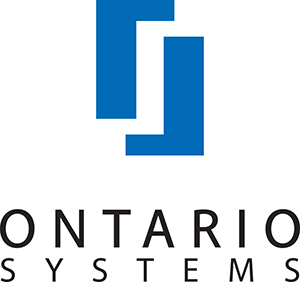Solving revenue cycle challenges with automation: 4 tips for maximizing your ROI
The healthcare revenue cycle is ripe for the kind of transformative change that automation technologies can bring. In fact, there may be no better application for these technologies. Time spent on low-value manual tasks, process errors and gaps, and friction in the patient’s financial journey — all of which cut deeply into providers’ top and bottom lines — can now be effectively addressed, even as providers scale their operations.
Health systems that adopt these technologies are already seeing ripple effects in their revenue cycle operations. Over time, as employees do more with less and the revenue cycle accelerates, these providers will enjoy stronger financial health and market prospects. A virtuous cycle of improvement that lowers costs, boosts revenue and enhances the patient experience will make it easier for them to continue expanding their mission.
Automation technologies can drive all of these outcomes and deliver powerful ROI — as long as providers take a practical approach to investing in these technologies. The first steps are understanding the types of automation available today and determining how to deploy them.
Automation technologies that are transforming the revenue cycle
Rather than eliminating healthcare jobs, revenue cycle automation enables existing staff to:
- Avoid unnecessary manual touches
- Focus on higher-yield tasks
- Perform the right tasks at the right time
These shifts are key to optimizing revenue cycle processes and revenue recovery.
Robotic process automation (RPA)
RPA can interact with software applications and handle repetitive rule-based tasks (e.g., claim status inquiries) just as a human worker would. While RPA reduces the need for representatives to contact payers, it can also reduce unproductive time, such as the time they normally spend on hold and navigating interactive voice response (IVR) systems. RPA not only drives efficiency, but also results in fewer errors and more uniform revenue cycle processes.
Artificial intelligence (AI)
AI performs and makes decisions just as humans might, and it’s designed to grow smarter over time. For healthcare providers, AI can model and predict availability of important resources. When reps are attempting to gain prior authorization or follow up on a claim, for example, AI can determine when to connect them with payer representatives to maximize call capacity.
Data analytics (“Big data”)
Data analytics helps providers make better-informed business decisions by examining large and varied data sets and identifying hidden correlations, patterns and trends. These enterprise-level insights can be used to pinpoint and address issues that are triggering denials, improve representative productivity on the accounts receivable front line, and fine-tune patient engagement based on patients’ evolving behaviors and preferences.
4 keys to automating your revenue cycle for maximum value
To address operational and financial challenges in a significant, sustained way, you need to be intentional about where and how you incorporate automation technologies in your revenue cycle. Here are four things you can do optimize your ROI.
1. Identify your highest-value opportunities
Any new automation solution should closely align with:
- The real business problems you face
- Your operational needs
- The inefficiencies and gaps that are leaking productivity and revenue
To identify process improvement candidates, focus on high-volume, rule-based, repetitive tasks that shouldn’t require manual touches.
When narrowing the field of process improvement candidates, look beyond the task at hand. Current business conditions and considerations — time, talent, expected yield and budget — should factor into your calculation.
This should be an ongoing closed-loop process in which you measure the success of current candidates, identify new candidates and continue easing friction in the revenue cycle.
2. Look to “reskill” your most valuable asset
Realizing the true value of automation isn’t about reducing head count. It’s about making best use of the talent you have, thus improving employee engagement and satisfaction — and setting the stage for higher retention and related cost savings.
Automation in the revenue cycle will free your employees from routine tasks, help them become more productive and empower them to make better decisions. A more effective and impactful workforce will be the ultimate value driver for your organization.
3. Aim for higher-than-linear yields
More technology may not be better. Your technological progression, or the extent to which you invest in revenue cycle automation, will be determined by the yield targets you’re willing to accept.
Your business challenge is to achieve yields beyond a simple linear investment by attacking the right problems and freeing up your resources to tackle higher, more productive endeavors.
4. Ignore the hype and ask for practical solutions
When technology providers tout exciting new capabilities and features such as RPA, neural networks, machine learning, data analytics and AI, it’s easy to get swept up in the hype. But these technologies are still in their infancy, and only practical, precisely tailored solutions can deliver meaningful benefits.
Be sure to keep the conversation with any technology vendor focused on your specific requirements and goals, and how you’ll apply the right technology to the business challenges you’re targeting. Ask to see proven results. Once you’ve adopted the right solutions and created practical momentum with accelerating ROI, you can launch into new use cases as these cutting-edge technologies continue to mature.
Hospitals and health systems across the U.S. are improving revenue cycle efficiency, productivity and performance with ease — without disrupting their EHR setup and workflows. Click here to learn more.






